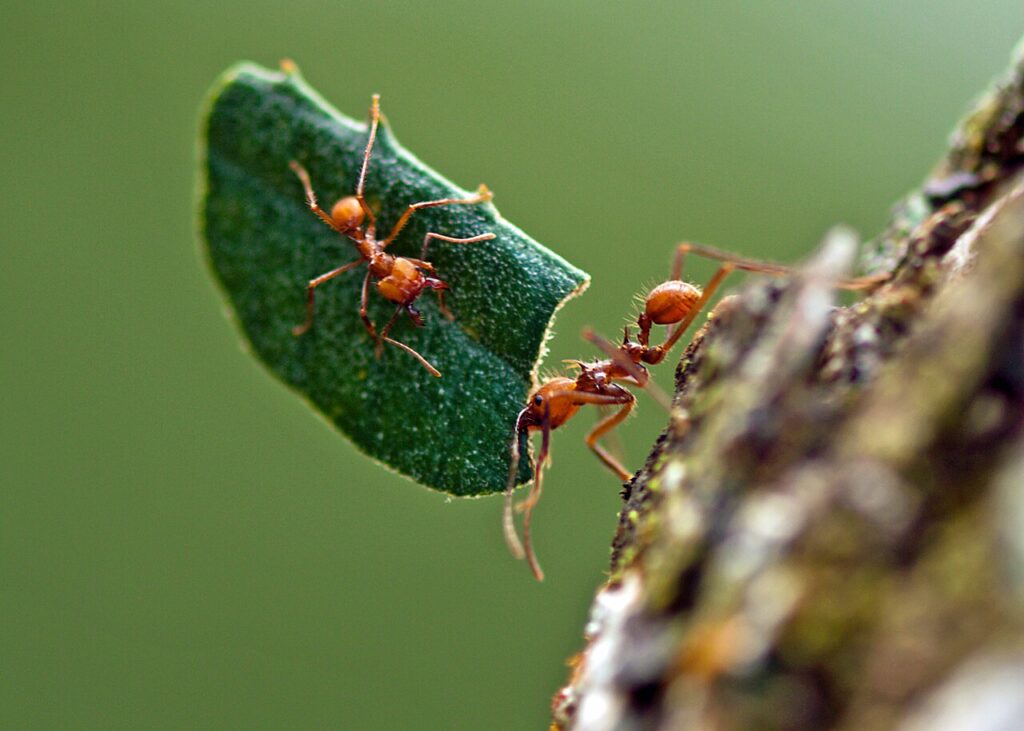Our Terms & Conditions | Our Privacy Policy
Science museum’s fascinating residents move home this Easter
 ‘Hitchiking leafcutter ant’ by Kathy & sam from Beaverton OR, USA is licensed under CC BY 2.0
‘Hitchiking leafcutter ant’ by Kathy & sam from Beaverton OR, USA is licensed under CC BY 2.0
One of Techniquest’s most fascinating attractions – a colony of leafcutter ants – has been given an upgraded new home this Easter, offering visitors a more immersive experience and a closer look at the mesmerising insects at work.
Techniquest is Wales’ largest science discovery centre, set in the heart of Cardiff Bay. It provides STEM (Science, Technology, Engineering and Mathematics) experiences for all ages and abilities, providing a platform to educate, entertain and make science accessible to all across Wales.
The Science Discovery Centre’s smallest inhabitants, the leafcutter ants, have just made the move upstairs into the ‘Our World’ Zone after being introduced in the ‘Low Light’ Zone nearly seven years ago.
The new location comes with an all-new tank. The C-shaped design, which is larger than their old home, and much more accessible to visitors who often stand awe-struck while watching the tiny workers do their thing.

Symbiosis
Leafcutter ants are considered some of Earth’s smallest farmers, as — contrary to popular belief — the ants don’t consume leaves, but instead use them to feed a fungus inside their tank that produces more easily-digestible food.
This food, called gongylidia, is filled with fats and proteins that keeps the ants well-fed, promotes population growth, and serves as the result of a mutually-beneficial relationship between insect and fungus.
 Techniquest’s ant colony and their new space on the first floor of the Science Discovery Centre in Cardiff Bay
Techniquest’s ant colony and their new space on the first floor of the Science Discovery Centre in Cardiff Bay
Andy, an ant expert who oversaw the transportation of the colony, shared more about what the move might mean for its population. He said: “We have fitted a system involving these one-litre tubs filled with fungus.
“There are around one hundred of those buried in the soil, and it means that the colony can build three or four-times more volume of fungus so they can achieve three or four-times more in terms of sheer numbers.
“This new tank at full capacity would hold around 300,000–400,000 ants. The calculation that you apply if you want to estimate a colony’s size is there are around 10,000 ants per litre of fungus.
“Since we’re putting one hundred one-litre tubs in the tank, that would suggest you’d get a million ants in the tank, but there won’t quite be that many.”

Dedication
With a volume of 0.938m³, the new tank can hold approximately 938 litres. While visitors may see some of the one-litre tubs pressed against the glass, most are buried deep in the soil.
The appropriately-named leafcutter ants are relentless foragers, with colonies in the wild taking up the same amount of vegetation as an adult cow every day.
At Techniquest, the colony is connected to their food supply by a clear pipe running overhead — visitors to the centre can find the exhibit on the first floor and watch thousands of ants travelling back and forth, transporting leaves back to the tank.
 Techniquest’s ant colony and their new space on the first floor of the Science Discovery Centre in Cardiff Bay
Techniquest’s ant colony and their new space on the first floor of the Science Discovery Centre in Cardiff Bay
Andy said: “This colony, in terms of weight, you could equate to needing a full sized cabbage per day.
“When it’s going at full pelt, you would need to give it a combination of leaves, Brussels sprouts, and oats, and it’ll start to grow much, much larger than the old colony.
“In the wild, when they get to [a colony population of] three or four million, they will consume the same amount as an adult cow.
“That’s why they have such an impact on nature in the wild. If you’ve got, say, 200 large colonies per acre, you’ve got the equivalent of 200 cows per acre.”
Housewarming
In their new location, the ants will be exposed to more light and sunshine, which may lead to questions about how they’ll manage in their new environment, but Andy says there’s no cause for concern: “Their new area is a warmer part of the building, as it’s higher up and has the sunshine hitting it more, so it will probably benefit them if anything.
“They don’t care about light — they’ll build their fungus gardens against the glass whether it’s light or dark, it doesn’t matter to them.”
 Techniquest’s ant colony on the move at the Science Discovery Centre in Cardiff Bay. Image: Techniquest
Techniquest’s ant colony on the move at the Science Discovery Centre in Cardiff Bay. Image: Techniquest
Additional information has been added to the exhibit, too, so visitors can discover more about Techniquest’s ants, including the roles that different ants play in its growth, and also get a close-up look at the queen of Techniquest’s original colony.
This Easter is the colony’s housewarming period and as the holidays tend to be very popular times to visit, Techniquest recommends booking all tickets in advance at techniquest.org.
Support our Nation today
For the price of a cup of coffee a month you can help us create an
independent, not-for-profit, national news service for the people of Wales, by
the people of Wales.
[ad_1]
Images are for reference only.Images and contents gathered automatic from google or 3rd party sources.All rights on the images and contents are with their legal original owners.
[ad_2]



Comments are closed.